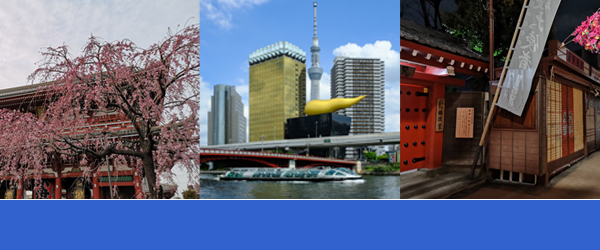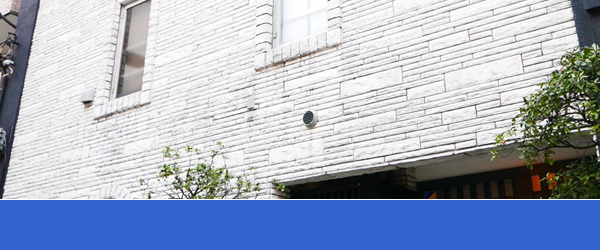Walking through the streets of Japan, there’s something you see every day, throughout the day, in many places. Yet, perhaps you’ve never paused to ponder what it is. As the sun rises over Tokyo, casting a golden hue on the bustling city, an intricate network unfolds beneath your feet, guiding the way for millions and weaving a narrative of inclusivity – it’s the ubiquitous marvel known as Tenji blocks.
Japan, a country that seamlessly blends tradition with modernity, introduces visitors to a unique feature enriching their urban exploration – the Tenji block. Beyond the visual allure of cherry blossoms and architectural marvels, Tenji blocks silently contribute to the accessibility and inclusivity of Japan’s cityscapes.

Tenji blocks, also known as tactile paving or braille blocks, have become increasingly common in urban landscapes, offering a revolutionary solution to improve mobility and accessibility for individuals with visual impairments. These textured strips, embedded in sidewalks, serve as a key element in the philosophy of universal design, aiming to create an inclusive environment for everyone, regardless of their abilities. In this article, we will explore the meaning of “tenji block,” its various types, historical roots, and the significant impact it has had on urban planning and accessibility worldwide.
Meaning and Types of Tenji Blocks:
The term “tenji” originates from the Japanese system of braille, making “tenji block” synonymous with “braille block.” These blocks use tactile features to communicate information about the built environment to all users, particularly those with visual impairments.

History of the Tenji Block:
The tenji block was invented by Seiichi Miyake in Japan, driven by his concern for a visually impaired friend. Miyake, along with his brother Saburo, developed the first tactile blocks in the 1960s, initially presented to the Okayama Blind Association. The blocks were installed near the School for the Blind in Okayama City in 1967. By 1977, the Japanese National Railway adopted tenji blocks on station platforms, leading to widespread use in Japan by 1985.
Despite its global popularity, little is publicly known about Miyake’s story. In March 2019, Google honored Miyake’s achievement with a Doodle.
Material Diversity: Form Meets Adaptability
Tenji blocks are available in various materials, including concrete, metal domes embedded in concrete, formed stone or clay pavers, cast iron, and plastic. Metal domes are often preferred for areas with snow plows, as they withstand plow blades. The iconic bright yellow color of tenji blocks, originally grey, enhances visibility for those with weak or partial sight.
- Concrete and Metal Domes: Widely found on city sidewalks, these durable materials withstand urban rigors, ensuring longevity and accessibility.
- Formed Stone or Clay Pavers: Blending seamlessly with historical sites, these materials preserve the cultural aesthetic while incorporating tactile functionality.
- Plastic: Vibrant and welcoming, plastic Tenji blocks are often utilized indoors, contributing to inclusive environments, especially in busy transportation hubs.
- Truncated Domes: The first type of tenji block features small raised dots in a grid pattern known as “truncated domes.” These dots serve as tactile indicators, signaling upcoming changes in the walking surface. Straight grids denote changes in elevation, while offset grids run parallel to features such as subway or train platforms.
- Long, Wide Bumps: The second type of tenji block includes plates with long, wide bumps. Continuous, narrow, square-edged bumps, referred to as “rods,” act as clear warnings and are often placed near hazards like stairways. Smooth, oblong bumps with rounded ends serve as directional guides, creating safe pathways and wayfinding routes for individuals with visual impairments.


Tactile Paving and Universal Design:
Universal design aims to create multi-sensory environments, recognizing that traditional visual notifications may not be sufficient for everyone. Tactile paving, like tenji blocks, adds auditory and textured elements to the environment, benefiting not only individuals with visual impairments but enhancing the experience for all users. The high contrast and nubbled texture of tenji blocks can also catch the attention of distracted pedestrians.

Indoor tactile paving foot path for the blind and vision impaired handicap in Japan
Global Impact and Standardization:
Since their introduction, tenji blocks have become a global standard for universal design. Japan, where the blocks originated, has over 30,000 kilometers of these tactile pathways, covering major cities and rural areas. The government continues to expand the network as part of its commitment to universal accessibility.
Revolutionizing Accessibility: The “shikAI” QR Navigation System
In the realm of accessibility, Japan continues to pioneer innovative solutions. The latest addition to this landscape is the “shikAI” QR navigation system, designed to assist visually impaired individuals in navigating through train stations with unprecedented ease.
- QR Codes on Tactile Blocks: The “shikAI” system utilizes QR codes displayed on tactile blocks within train stations. These QR codes, strategically placed for optimal accessibility, serve as beacons of guidance for the visually impaired.
- Smartphone Integration: To access the information encoded in the QR codes, users employ a dedicated app named “shikAI” on their smartphones. The app, designed specifically for iPhones, aligns with the prevalence of visually impaired iPhone users in Japan.
- Accurate Route Determination: Upon scanning the QR code with the “shikAI” app, users receive precise audio guidance, outlining the accurate route from their current location to the desired destination. This revolutionary technology ensures that visually impaired individuals can navigate seamlessly within train stations, from the platform to the exit, without the fear of getting lost.
- Screen Reader Feature: Understanding the diverse needs of visually impaired users, the “shikAI” app incorporates a screen reader feature, enhancing its accessibility and usability for those with visual impairments.
Seiichi Miyake’s invention of the tenji block has revolutionized urban planning and accessibility, providing a universal design approach that benefits people with visual impairments and enhances the experience for all citizens. From its humble beginnings in Okayama City to its global standardization, the tenji block stands as a symbol of inclusivity, guiding individuals through cities and creating a safer and clearer built environment. Beyond the iconic yellow strips, Japan’s commitment to accessibility includes braille signage, tactile maps, elevators, ramps, and other measures, setting a benchmark for inclusive urban design worldwide.








